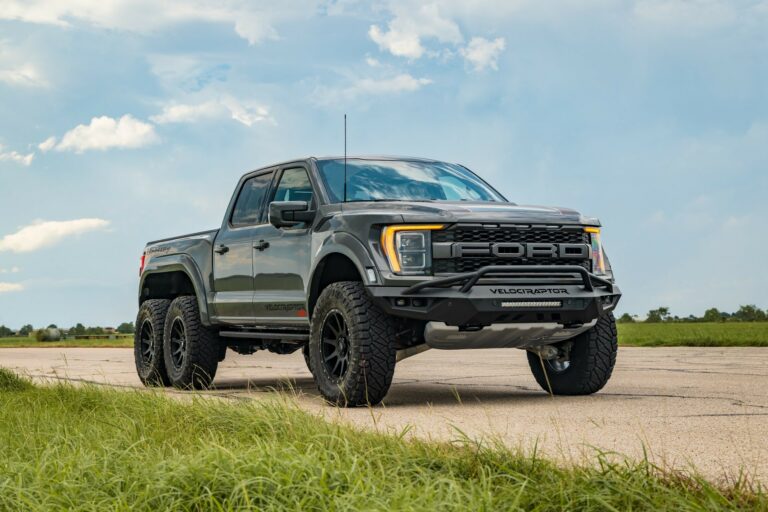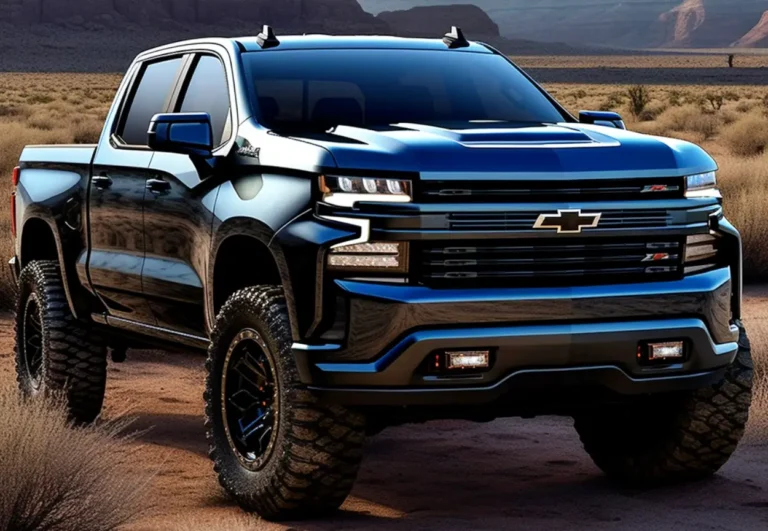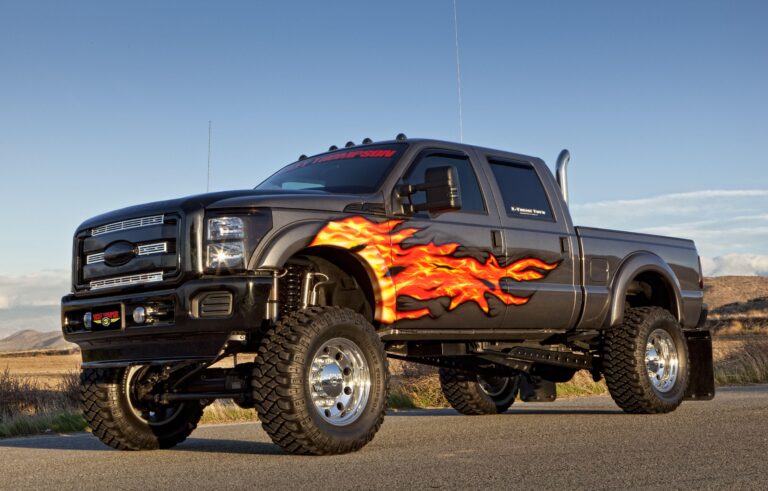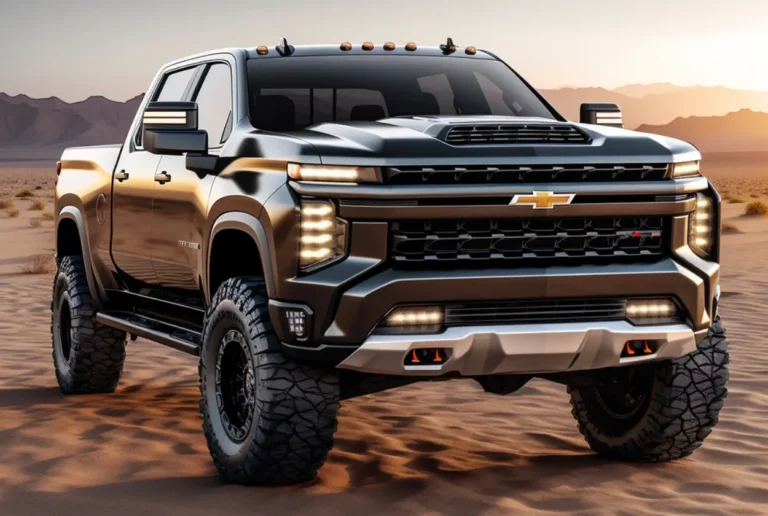89 Chevy Canopy Fit A 99 Chevy: A Deep Dive into Cross-Generational Compatibility
89 Chevy Canopy Fit A 99 Chevy: A Deep Dive into Cross-Generational Compatibility cars.truckstrend.com
The allure of reusing existing equipment is powerful, especially when it comes to expensive truck accessories like canopies or toppers. For owners of a classic 1989 Chevrolet C/K pickup eyeing a newer 1999 Chevrolet Silverado or Sierra, the question inevitably arises: "Will my ’89 Chevy canopy fit a ’99 Chevy?" This article will serve as a comprehensive guide, exploring the technical realities, potential challenges, and ultimately, the feasibility of such a cross-generational fit.
Introduction: Bridging the Generational Gap
89 Chevy Canopy Fit A 99 Chevy: A Deep Dive into Cross-Generational Compatibility
The desire to transfer a perfectly good truck canopy from an older vehicle to a newer one is often driven by practicality and cost savings. Why buy a new canopy when you already own one? However, automotive design evolves, and truck beds are no exception. The 1989 Chevrolet C/K pickup (part of the GMT400 platform, produced from 1988-1998) and the 1999 Chevrolet Silverado/Sierra (the inaugural year for the GMT800 platform, produced from 1999-2007) represent two distinct generations of Chevrolet trucks.
While both are iconic Chevy pickups, their underlying architectures and specific dimensions, particularly concerning the truck bed, are significantly different. This fundamental divergence is the crux of our inquiry. Understanding these differences is paramount to determining whether an ’89 canopy can, with any degree of success, be fitted onto a ’99 truck. Spoiler alert: a direct, perfect fit is highly improbable, but let’s delve into why.
Understanding the Generational Divide: GMT400 vs. GMT800
To fully grasp the challenges of fitting an ’89 canopy on a ’99 truck, it’s essential to understand the platforms involved:
- GMT400 Platform (1988-1998 Chevy C/K & GMC C/K): The 1989 Chevy pickup falls squarely into this generation. These trucks were known for their robust, square-bodied design. The truck beds on these models have specific dimensions, bed rail heights, and cab contours that define their compatibility with accessories.
- GMT800 Platform (1999-2007 Chevy Silverado & GMC Sierra): The 1999 Chevy pickup introduced an entirely new design, featuring more aerodynamic lines, a revised chassis, and significant changes to the truck bed. This marked a complete redesign from the ground up, not just a facelift.

The key takeaway here is that these are not merely different model years; they are different platforms. Automotive manufacturers rarely carry over significant body dimensions between entirely new platforms, especially when designing for improved aerodynamics, structural rigidity, and interior space.
Key Dimensions and Design Differences
The incompatibility between an ’89 canopy and a ’99 truck primarily stems from several critical dimensional and design discrepancies:
- Bed Rail Height: This is arguably the most significant obstacle. The bed rails on GMT800 trucks (like the ’99 Silverado) are generally taller than those on GMT400 trucks (like the ’89 C/K). This means an ’89 canopy, designed for lower bed rails, would sit below the top edge of the ’99 bed rails. This results in an unsightly gap, poor aesthetics, and, most importantly, a compromised seal against the elements.
- Bed Rail Width: While bed lengths (e.g., 6.5 ft short bed or 8 ft long bed) might be nominally similar across generations, the exact width across the top of the bed rails can vary. An ’89 canopy might be slightly too narrow or too wide to sit flush and securely on a ’99 bed, making clamping difficult and potentially leaving gaps.
- Cab Contouring: The front wall of a truck canopy is designed to conform to the curvature of the truck’s cab to provide a snug, watertight seal. The GMT400 trucks (’89) have a more upright, squared-off rear cab profile compared to the more rounded and aerodynamic cab design of the GMT800 trucks (’99). An ’89 canopy will not sit flush against a ’99 cab, creating a significant gap at the front that will allow water, dust, and debris to enter the bed.
- Tailgate Design and Rear Opening: The precise shape and dimensions of the tailgate opening and the tailgate itself changed between these generations. This can affect how the rear door of the canopy aligns and seals with the tailgate, potentially leading to misalignment or an inability to close properly.
- Bed Length Variations (Subtle): Even if both trucks are "short bed" or "long bed," the exact interior and exterior dimensions might differ by an inch or two. This seemingly small difference can prevent the canopy from sitting properly or aligning with the bed’s edges.

The Verdict: Direct Fit is Highly Unlikely
Given the fundamental differences in platform design and the specific dimensional changes outlined above, a direct, perfect, or even aesthetically pleasing fit of an ’89 Chevy canopy onto a ’99 Chevy Silverado/Sierra is highly unlikely, if not impossible, without significant modifications.
The canopy would not sit flush, would create large gaps, and would fail to provide the intended weather protection or security. It would look mismatched and unprofessional.
Potential Challenges and What to Expect
If you were to attempt this fitment, here’s a realistic look at the challenges you’d face:
- Significant Gaps and Leaks: Due to the bed rail height difference and poor cab contouring, water intrusion during rain or car washes is almost guaranteed. Dust and dirt will also easily enter the bed.
- Compromised Aesthetics: The canopy will sit awkwardly, potentially lower than the bed rails, or with large gaps around the edges and at the cab. It will look like an ill-fitting aftermarket accessory, significantly detracting from the truck’s appearance.
- Security Issues: If the canopy cannot be securely clamped or sealed, it offers minimal protection for your cargo against theft or accidental loss.
- Mounting Difficulties: Standard canopy clamps may not reach or securely grip the ’99 bed rails due to width discrepancies or the overall poor fit. Custom brackets or extensive shimming would likely be required.
- Reduced Structural Integrity: A poorly fitted canopy can flex and stress, potentially leading to cracks in the fiberglass or aluminum, or damage to the truck bed rails over time.
- Rear Door Alignment: The canopy’s rear door might not align properly with the ’99 tailgate, making it difficult to open/close or seal effectively.
Modification Strategies (If You’re Determined)
Despite the strong recommendation against it, some individuals might still be determined to make an ’89 canopy work on a ’99 truck. Be forewarned: these modifications are often more trouble, time, and expense than simply acquiring a compatible canopy.
- Raising the Canopy (to compensate for taller ’99 bed rails):
- Method: This involves fabricating a frame or using lumber/steel tubing as risers between the bed rails of the ’99 truck and the bottom edge of the ’89 canopy.
- Challenges:
- Stability: The canopy will be elevated, making it less stable and potentially more prone to swaying or shifting.
- Aesthetics: The gap created by the risers will be visible, and it’s difficult to make this look clean or integrated.
- Sealing: You’ll need extensive weatherstripping and sealant (e.g., silicone) between the risers and the bed, and between the risers and the canopy, to prevent leaks.
- Mounting: You’ll need longer or custom-fabricated clamps to reach the bed rails through the risers.
- Custom Brackets and Clamps: You may need to design and fabricate entirely new mounting brackets that can accommodate the dimensional differences and securely attach the canopy.
- Extensive Sealing: Be prepared to use copious amounts of high-quality weatherstripping, foam insulation, and automotive-grade silicone sealant to try and fill the inevitable gaps, especially at the front against the cab.
- Cosmetic Trimming/Additions: In some extreme cases, individuals might attempt to trim the canopy or add cosmetic fillers to reduce the visual impact of the gaps, but this is highly complex and rarely yields good results.
Important Note: Any significant modification can compromise the structural integrity of the canopy and may void any remaining warranty. More importantly, it can lead to unsafe conditions if the canopy is not securely attached.
Is It Worth It? Cost vs. Benefit Analysis
Let’s break down the financial and practical implications of trying to force an ’89 canopy onto a ’99 truck versus acquiring a proper one.
| Option | Initial Cost (Estimated) | Pros | Cons | Overall Recommendation |
|---|---|---|---|---|
| Attempting to Fit ’89 Canopy | $50 – $300+ | Reuse existing asset; "Free" (if you already own it) | Poor fit, leaks, poor aesthetics, security issues, significant time/effort, potential damage | Not Recommended |
| (Materials for risers, sealant, custom clamps, paint, time value) | ||||
| Used Canopy for ’99-’07 Silverado | $200 – $800+ | Designed to fit, good aesthetics, weather protection, secure | Requires finding one, condition may vary, may need minor repairs/paint | Highly Recommended |
| New Canopy for ’99-’07 Silverado | $1500 – $4000+ | Perfect fit, warranty, choice of features/colors, best aesthetics | Highest cost | Recommended |
As the table clearly illustrates, the perceived "savings" of reusing an ’89 canopy are quickly eroded by the costs, effort, and frustration associated with trying to make it fit. The outcome will almost certainly be unsatisfactory in terms of appearance, functionality, and protection.
Practical Advice and Actionable Insights
For anyone considering a canopy for their 1999 Chevrolet Silverado/Sierra:
- Measure Meticulously: If you absolutely must try, measure the exact dimensions of both the ’89 canopy (especially its base) and the ’99 truck bed (top rail width, height from bed floor to top of rail, cab contour). This will confirm the incompatibility before you even lift a finger.
- Prioritize Compatibility: The best and most practical advice is to seek out a canopy specifically designed for the GMT800 platform (1999-2007 Chevrolet Silverado or GMC Sierra).
- Explore the Used Market: Websites like Craigslist, Facebook Marketplace, and local classifieds are excellent resources for finding used truck canopies. Many truck owners sell their canopies when they upgrade vehicles. Be patient, and you can often find a good quality, used canopy for a fraction of the new price.
- Consider Your Needs: Do you need maximum weather protection? Security? Or just a cover? Your specific needs will help determine if a perfectly fitting used canopy is sufficient or if a new one with all the bells and whistles is necessary.
- Factor in Installation: Even a perfectly fitting canopy might require two people to lift and position. Professional installation is also an option if you’re unsure.
Frequently Asked Questions (FAQ)
Q1: Will an ’89 Chevy canopy fit my ’99 Silverado directly?
A1: No, a direct and proper fit is not possible. The two trucks belong to different generations (GMT400 vs. GMT800) with significant differences in bed dimensions, rail heights, and cab contours.
Q2: What are the main dimensional differences between the ’89 and ’99 Chevy truck beds?
A2: The most significant differences are the bed rail height (the ’99 is taller), the width across the top of the bed rails, and the contour of the cab where the canopy meets the truck.
Q3: Can I modify an ’89 canopy to fit a ’99 truck?
A3: While theoretically possible with extensive fabrication (e.g., building risers, custom clamps, heavy sealing), it is generally not recommended. The result is often unsightly, prone to leaks, and not worth the effort or cost compared to buying a compatible canopy.
Q4: Where can I find a canopy that will fit my ’99 Chevy Silverado/Sierra?
A4: Look for canopies designed for 1999-2007 Chevrolet Silverado or GMC Sierra trucks (GMT800 platform). Excellent sources include used marketplaces (Craigslist, Facebook Marketplace), local truck accessory shops, or new canopy dealers.
Q5: Will a canopy from a 2000-2007 Chevy Silverado fit my ’99?
A5: Yes, any canopy designed for the 1999-2007 GMT800 platform Silverado/Sierra should fit your ’99, assuming the bed length (short bed/long bed) matches.
Q6: What about the ’99 "Classic" model? Does that make a difference?
A6: In 1999, Chevrolet did sell some carryover GMT400 "Classic" C/K trucks alongside the new GMT800 Silverado. If your ’99 truck is the "Classic" (looks like the older body style), then an ’89 canopy would fit it, as they are both GMT400. However, the question specifically refers to the "99 Chevy" which overwhelmingly implies the new body style Silverado/Sierra. It’s crucial to confirm which ’99 model you own.
Conclusion: A Mismatch Best Avoided
The notion of fitting an ’89 Chevy canopy onto a ’99 Chevy truck, while appealing from a cost-saving perspective, is fundamentally flawed due to the significant generational shift in truck design. The 1989 C/K and 1999 Silverado/Sierra represent distinct platforms with different bed dimensions, rail heights, and cab contours.
Attempting such a fitment will inevitably lead to a host of problems: significant gaps, persistent leaks, compromised security, and an aesthetically displeasing appearance. While modifications are possible, they are rarely cost-effective or successful in achieving a proper, functional, and visually appealing result.
For the vast majority of truck owners, the practical and financially sensible approach is to acquire a canopy specifically designed for the 1999-2007 GMT800 platform. The slight upfront investment in a compatible used or new canopy will save countless hours of frustration and ultimately provide the secure, weather-tight, and integrated look that your truck deserves. Sometimes, it’s best to acknowledge that some things just aren’t meant to fit.







